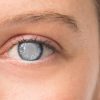Using ABA therapy can be advantageous for kids with autism spectrum disorder (ASD) and can also assist those with attention deficit hyperactivity disorder (ADHD). Many individuals diagnosed with autism have witnessed favorable results from ABA therapy, confirming its effectiveness.
Healthcare professionals frequently recommend combining behavioral therapy with prescribed medications for individuals with ADHD to effectively address symptoms, regardless of their severity.
Behavioral therapy has demonstrated remarkable success in tackling issues linked to ADHD, making it a favored approach for skills enhancement in individuals grappling with the disorder.
Let’s delve into the merits this therapy offers for kids with ADHD.
Children Affected by ASD
Autism spectrum disorder (ASD) is a developmental condition associated with brain differences. People with ASD might struggle with social interactions, communication, and could display repetitive behaviors or narrow interests.
Furthermore, they could exhibit unique learning, movement, or focus patterns. It’s essential to recognize that some individuals without ASD may also exhibit similar signs.
For those with ASD, these traits can create significant challenges in their everyday life.
Children Dealing with ADHD
ADHD is frequently diagnosed in children at a young age and is characterized by problems with impulse control, leading to impulsiveness and difficulties in maintaining focus.
The main symptoms comprise:
- Struggles with concentration
- Frequent impulsive behaviors
- Excessive talking
- High levels of hyperactivity
- Challenges with socializing
ADHD is broken down into three primary subtypes: hyperactivity, combined type, and inattention.
Hyperactivity or impulsivity can result in uncontrolled movements, fidgeting, or restlessness, leading to actions like interrupting or speaking out of turn.
The combined type indicates the presence of both hyperactivity and inattention. Inattention and disorganization involve difficulties in managing time and completing tasks in an organized manner.
Incorporation of ABA Therapy for Children Affected by ASD & ADHD
As per the CDC, behavioral therapy effectively reduces unwanted behaviors in individuals with ADHD, akin to its impact on those with ASD.
Studies indicate that a combination of medication with ABA therapy is beneficial for most kids with ADHD, while delivering significant advantages for children with ASD.
However, some kids may be too young for treatment, and parents are advised to consult a medical professional for suitable recommendations based on age.
Meanwhile, parents can employ ABA therapy tactics to tackle ADHD symptoms.
ABA Therapy Methodologies for Children Affected by ASD & ADHD
The aim of ABA therapy is to instigate positive changes in a patient’s behavior through a three-step process, commencing with the antecedent.
The antecedent serves as a signal or directive, making the individual aware of the repercussions of their actions. Emphasis in this stage is placed on the manifestation of behaviors and the consequent outcomes.
Parents and therapists can utilize specific approaches to foster desired behaviors in children.
Below are some commonly employed techniques:
Response Training
This methodology involves play-centered therapy targeting critical aspects of cognitive skills, social interactions, and learning proficiencies in children.
In response training, interventions are impartial, indicating that the actions taken by therapists and parents directly align with the child’s behavior.
If a child appropriately requests something, the response is tailored based on the context of the interaction. Positive behavior is rewarded solely with items relevant to their treatment.
Trial Training
This strategy dissects intricate tasks into specific segments. Individuals receive rewards upon displaying desired behaviors.
Implementing a reward system of this nature considerably enhances the advantages for both children with autism spectrum disorder and ADHD.
Self-Management Training
Self-management training is frequently administered to older patients affected by ASD and ADHD. It involves formulating a personalized plan to enable patients to self-regulate their behavior and adhere to their treatment autonomously.
Through self-regulation, therapists offer guidance on how patients can reward themselves for exhibiting specific behaviors, ensuring successful skills enhancement.
Differential Reinforcement
This technique reinforces positive behaviors in children by rewarding actions deemed favorable.
In this method, parents and therapists deliberately delay positive reinforcement to foster sustained positive behavior.
Exploring Common & Superlative Therapies for Children Dealing with ASD Or ADHD
While a variety of therapies exist to address ASD and ADHD, the approach can vary, particularly between children and adults.
Treatment tailored for adults diverges significantly from that designed for children. Treatment for children often involves parents, caregivers, and educators.
Cognitive-behavioral therapy is a frequently utilized technique.
Cognitive-behavioral therapy has yielded remarkable success and is regarded as one of the finest ABA therapies for kids, leading some individuals to discontinue their reliance on previously prescribed medications.
In Conclusion
The approach varies between adults and children, typically incorporating parents and educators in children’s treatment. Cognitive-behavioral therapy is a prevalent technique that emphasizes positive behaviors through methods like self-management and differential reinforcement.
Considering this, it’s clear that children diagnosed with autism or ADHD can derive substantial benefits from ABA therapies.










